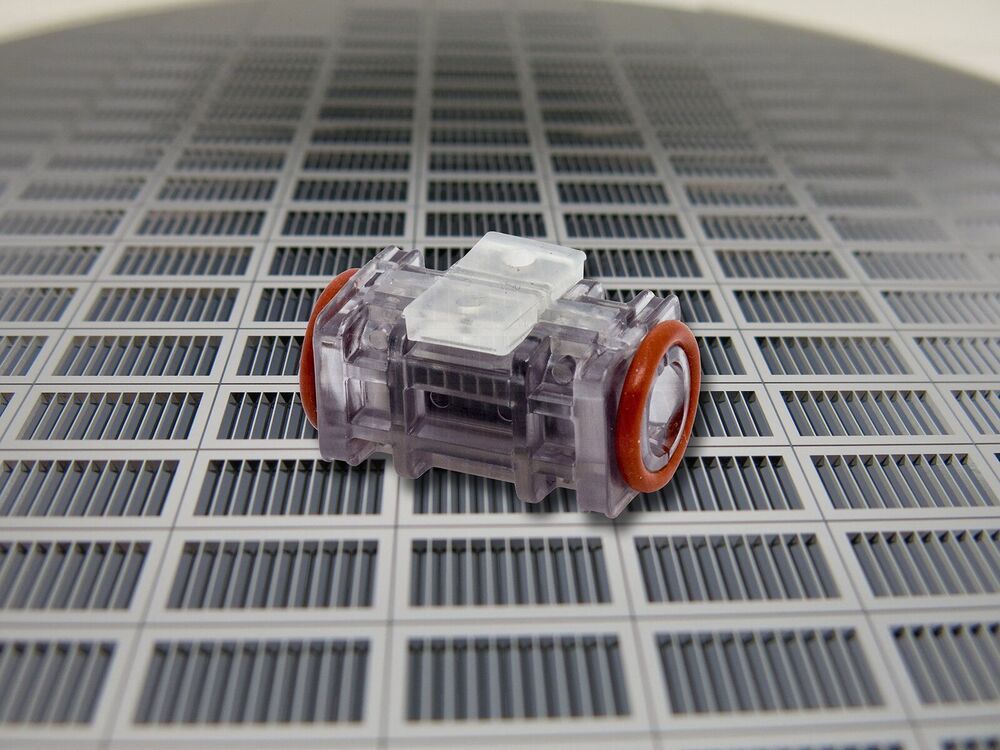Page 6151
Jun 23, 2021
Growing food with air and solar power: More efficient than planting crops
Posted by Jason Blain in categories: biotech/medical, food, solar power
A team of researchers from the Max Planck Institute of Molecular Plant Physiology, the University of Naples Federico II, the Weizmann Institute of Science and the Porter School of the Environment and Earth Sciences has found that making food from air would be far more efficient than growing crops. In their paper published in Proceedings of the National Academy of Sciences, the group describes their analysis and comparison of the efficiency of growing crops (soybeans) and using a food-from-air technique.
For several years, researchers around the world have been looking into the idea of growing “food from air,” combining a renewable fuel resource with carbon from the air to create food for a type of bacteria that create edible protein. One such project is Solar Foods in Finland, where researchers have the goal of building a demonstration plant by 2023. In this new effort, the researchers sought to compare the efficiency of growing a staple crop, soybeans, with growing food from air.
To make their comparisons, the researchers used a food-from-air system that uses solar energy panels to make electricity, which is combined with carbon dioxide from the air to produce food for microbes grown in a bioreactor. The protein the microbes produce is then treated to remove nucleic acids and then dried to produce a powder suitable for consumption by humans and animals.
Jun 23, 2021
Astronomers discover new dwarf planet or strange comet on eccentric orbit around the Sun
Posted by Atanas Atanasov in category: space
The celestial body could come close enough to the Sun for us to launch a mission.
Astronomers discovered a new object in an eccentric orbit around the Sun, which could come as close as 11 AU to our star.
Jun 23, 2021
A startup offering to take tourists to space in a ship lifted by an enormous balloon is selling tickets for $125,000 a ride
Posted by Takayuki Sugano in categories: internet, space
The luxury six-hour roundtrip flight will include plush reclining seats, anti-glare windows for photography, and livestream-capable WiFi.
Jun 23, 2021
Water disinfection with ozone
Posted by Quinn Sena in categories: biotech/medical, computing
While chlorine and ultraviolet light are the standard means of disinfecting water, ozone is equally effective in killing germs. To date, ozone has only been used as an oxidation agent for treating water in large plants. Now, however, a project consortium from Schleswig-Holstein is developing a miniaturized ozone generator for use in smaller applications such as water dispensers or small domestic appliances. The Fraunhofer Institute for Silicon Technology ISIT has provided the sensor chip and electrode substrates for the electrolysis cell.
Compared to conventional means of disinfection such as chlorine or ultraviolet, ozone dissolved in water has a number of advantages: it is environmentally friendly, remains active beyond its immediate place of origin, has only a short retention time in water and is subsequently tasteless. Due to its high oxidation potential, ozone is very effective at combating germs. It breaks down the cell membrane of common pathogens. In Germany, ozone is chiefly used to disinfect swimming pools and drinking water and to purify wastewater. Yet it is rarely used to disinfect water in domestic appliances such as ice machines and beverage dispensers or in other fixtures such as shower-toilets. MIKROOZON, a project funded by the State of Schleswig-Holstein and the EU, aims to change this.
Jun 23, 2021
Ultraviolet LEDs prove effective in eliminating coronavirus from surfaces and, potentially, air and water
Posted by Quinn Sena in categories: biotech/medical, energy
😃
As COVID-19 continues to ravage global populations, the world is singularly focused on finding ways to battle the novel coronavirus. That includes the UC Santa Barbara’s Solid State Lighting & Energy Electronics Center (SSLEEC) and member companies. Researchers there are developing ultraviolet LEDs that have the ability to decontaminate surfaces — and potentially air and water — that have come in contact with the SARS-CoV-2 virus.
“One major application is in medical situations — the disinfection of personal protective equipment, surfaces, floors, within the HVAC systems, et cetera,” said materials doctoral researcher Christian Zollner, whose work centers on advancing deep ultraviolet light LED technology for sanitation and purification purposes. He added that a small market already exists for UV-C disinfection products in medical contexts.
Indeed, much attention of late has turned to the power of ultraviolet light to inactivate the novel coronavirus. As a technology, ultraviolet light disinfection has been around for a while. And while practical, large-scale efficacy against the spread of SARS-CoV-2 has yet to be shown. UV light shows a lot of promise: SSLEEC member company Seoul Semiconductor in early April reported a “99.9% sterilization of coronavirus (COVID-19) in 30 seconds” with their UV LED products. Their technology currently is being adopted for automotive use, in UV LED lamps that sterilize the interior of unoccupied vehicles.
Breaking · 1 hr.
The eccentric technology innovator had been accused of tax evasion by the IRS.
Jun 23, 2021
Telehealth Extends Coverage of High-Risk Maternal-Fetal Care
Posted by Jason Blain in categories: biotech/medical, health
The U.S. is facing an unprecedented shortage of obstetricians and gynecologists (OB/GYNs). According to the American College of Obstetricians and Gynecologists, around half of the nation’s counties don’t have access to even a single OB/GYN, which means more than 10 million women are in need of OB/GYNs for primary care. Alarmingly, there are now 8000 fewer women’s health specialists than needed, and that number is predicted rise to 22000 by mid-century.
As the nation’s largest group of Maternal-Fetal Medicine (MFM) and OB/GYN Hospitalist providers, Obstetrix Medical Group is uniquely addressing this critical issue. With multiple diverse TeleMFM programs around the country, Obstetrix provides a key solution for hospitals and community OB/GYN physicians that improves access to specialty care for women with high-risk pregnancies.
Mednax clinicians have long relied on the benefits of telehealth to complement traditional in-person care. MFM providers specifically have utilized various forms of telehealth since the late 1980s. Today, virtual care continues to play an essential role in bridging distance gaps and bringing the highest quality care to patients in need, no matter their location. Through the use Vsee, one of Mednax’s primary telehealth platform vendors, as well as others, clinicians across the country are finding a silver lining during the COVID-19 pandemic. Though helpful in any region, in the rural areas of the Mountain West, it has become even more of a blessing. We spoke with Oliver (Bill) Jones, M.D., about how telehealth integrated into their practice and how it has positively impacted their high-risk patients.
Continue reading “Telehealth Extends Coverage of High-Risk Maternal-Fetal Care” »
Jun 23, 2021
COVID-19 tied to brain tissue loss, early research suggests
Posted by Jason Blain in categories: biotech/medical, neuroscience
COVID-19 was linked to brain tissue loss in a U.K. brain imaging study, according to early findings published June 15 in the preprint server medRxiv.
The study involved 782 participants, with researchers comparing brain scans from before and after COVID-19 infection. Researchers pulled data from the U.K. Biobank, which scanned more than 40000 participants before the pandemic hit the region, allowing them to invite participants back for a second imaging visit.
Findings showed tissue loss in certain parts of the brain.
Jun 23, 2021
Google deepens its healthcare presence: A timeline of the last year
Posted by Jason Blain in categories: biotech/medical, health, wearables
Google has invested heavily in healthcare. I think in the end, they will be the ultimate profile provider for users. Just connect your electronic health record with your personal profile combined with Fitbit wearable technologies.
Google has made moves to expand its presence in the healthcare sector during the last 12 months, including multiple partnerships with health systems, several new product launches and efforts to facilitate the country’s COVID-19 vaccine rollout.
Below is a timeline of Google’s key healthcare moves reported by Becker’s Hospital Review since June 2020.
Continue reading “Google deepens its healthcare presence: A timeline of the last year” »

















